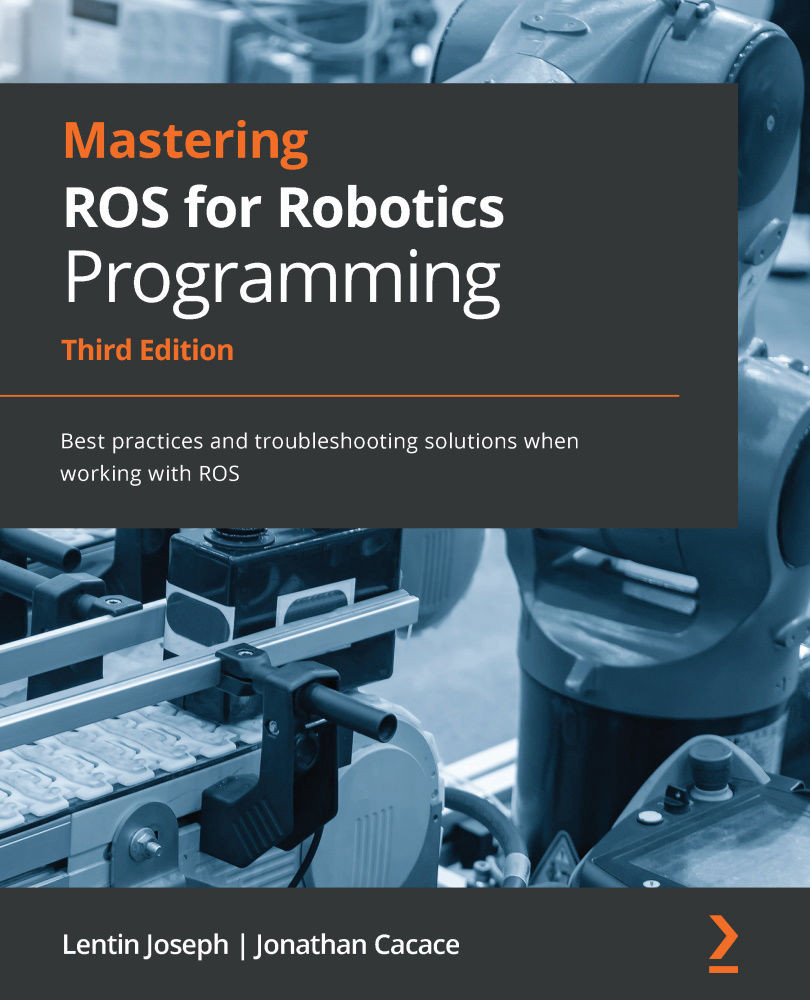Conventions used
There are a number of text conventions used throughout this book.
Code in text: Indicates code words in text, database table names, folder names, filenames, file extensions, pathnames, dummy URLs, user input, and Twitter handles. Here is an example: "We are using the catkin build system to build ROS packages."
A block of code is set as follows:
void number_callback(const std_msgs::Int32::ConstPtr& msg) {
ROS_INFO("Received [%d]",msg->data);
}
When we wish to draw your attention to a particular part of a code block, the relevant lines or items are set in bold:
ssh nvidia@nano_ip_adress password is nano
Any command-line input or output is written as follows:
$ mkdir css $ cd css
Bold: Indicates a new term, an important word, or words that you see onscreen. For example, words in menus or dialog boxes appear in the text like this. Here is an example: "To create a new simulation, use the top bar menu and select Wizards | New Project Directory."
Tips or important notes
Appear like this.


























































